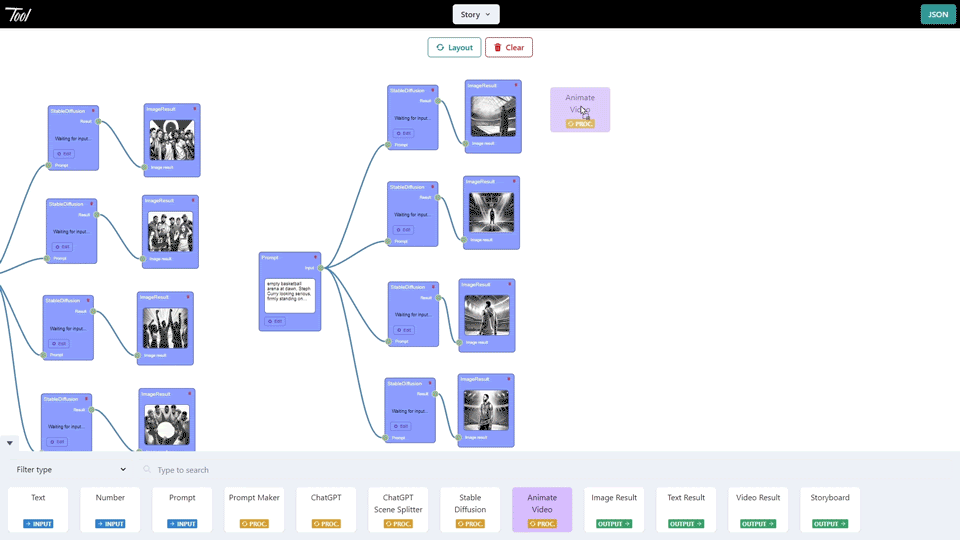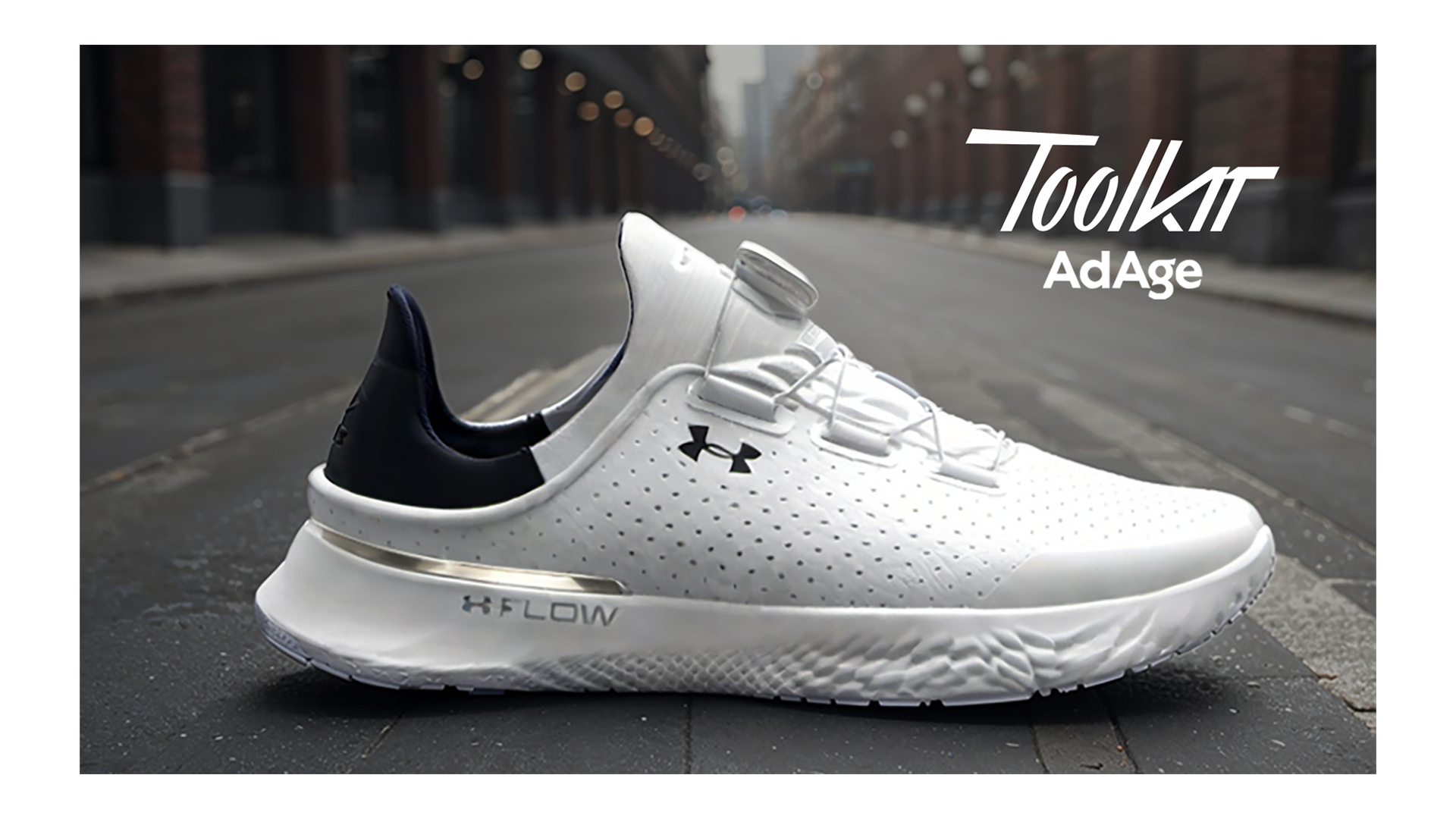
The service can learn a brand’s ‘visual DNA’ to create more personalized media, including products and models themselves
By Asa Hiken
Like most apparel brands, Under Armour faces a continuous need to spend portions of its advertising budget on product photography and videography. Creative directors often lament what comes next—the long days on set, equipment malfunctions and the inevitable rounds of reshoots.
But marketers developing generative AI are trying to nip this process in the bud. A new service from creative production company Tool is designed to compile a dataset representing a brand’s “visual DNA,” which can be edited and iterated upon to create new assets and obviate the need for physical shoots. These assets, generated by AI, can be lifelike representations of products as well as of human models wearing the products.

And after roughly 15 minutes of touch-up work, these assets are ready to use for a variety of advertising channels, including out-of-home placements, digital and print marketing and social posts, according to Dustin Callif, president of creative production company Tool.
The new service, dubbed “Toolkit,” is a potential boon for marketers looking to cut costs and save time, such as Under Armour, which has been one of its early testers. Viewed through a wider lens, the platform is an indication of the increasing creative abilities that generative AI offers the ad industry. Not concerned with streamlining emails or producing unusable visuals, Toolkit was developed to create advertising media that can withstand the scrutiny of mainstream audiences.

“This is an increasing reality,” said Jay Pattisall, VP and principal analyst at Forrester. “We’re moving beyond basic experimentation and getting to the point where systems are being built … for production, concept development and activation.” Jasper, Writer and Lucy are other AI platforms that are affording more creative capabilities to marketers, Pattisall said.
Ad Age recently sat down with Callif for an under-the-hood look at how Toolkit learned Under Armour’s visual identity to produce high-quality assets.
“[Tool’s] process … has given us an amazing jumpstart in how we create custom, ownable content featuring our products,” said Brian Boring, VP of global brand creative at Under Armour.
A pipeline of generative AI
Under Armour tasked Toolkit to create ad-ready images for its “SlipSpeed” shoe model—entirely with AI.
Before the service could produce this media, it first needed to learn the ins and outs of Under Armour’s style in order to compile a corresponding dataset of “visual DNA.” This was achieved through processing the brand’s style guides, product details and other miscellaneous data, as well as roughly 30 real images of SlipSpeed. As opposed to many AI-powered ad technologies, which train a large language model (LLM) on customer data or brand insights, Toolkit’s diet is primarily information pertaining to creativity.
Once the DNA had been established, Tool loaded it into a platform that resembles a block-coding interface. There’s a blank stage area in which drag-and-drop boxes of code can be connected to one another, only these boxes represent super-powerful AI platforms, such as ChatGPT and Stable Diffusion. This is the pipeline at the heart of Toolkit, allowing it to process a brand’s custom dataset through any number of AI services that are available through application programming interface (API) endpoints, and output assets.

The service’s first batch of media for SlipSpeed, released after one week, reflected 90% fidelity to the training data. In other words, the AI-generated images were 90% as realistic as the real images of the shoe that Under Armour provided. The remaining gaps were filled in by a human—touch-up work that took another 15 or so minutes.
But it wasn’t merely recreations of shoes that Toolkit could generate. In gobbling up Under Armour’s stylistic ingredients, the service also learned the look of the brand’s models and how they show up in its advertising. The result was an ability to create images of these people from scratch. These weren’t identical individuals, but rather original creations that matched the visual style of real models, reflecting their athletic builds, stoic facial expressions and focus on athletic activities in a sports-related environment.
This capability indicates the extent to which Toolkit could replace much of the need for physical shoots, according to Callif.
“There’s an opportunity to do this with cars and all kinds of other products,” Callif said.
The models needed some touch-up work as well, and a final ad may end up using only a sliver of the AI-generated body, such as legs or just the feet.

Callif recognizes the spooky nature of creating fake models from real ones, as well as the ethical implications.
“If we’re going to use AI-generated models, the people who those are based on will be paid,” he said.
Exactly how this will be done is unclear, Califf admitted. Using a real person’s likeness to generate digital copies is at the heart of the AI debate, and served as a main sticking point in the recently resolved SAG-AFTRA strike. While advertising has mostly not yet come into contact with this issue, brands heading in that direction have already created controversy.
“To render a digital twin starts to blur the lines of human authorship,” said Forrester’s Pattisall.
Super Bowl-ready? Not so fast
Callif is confident in Toolkit’s ability to create ready-to-use assets for billboards and social media, yet despite showing high marks in image fidelity, the service is not up to par for primetime activations such as the Super Bowl.
“If you’re trying to make a full-on Nissan commercial, I would definitely say the AI isn’t ready,” he said.
Still, a service like Toolkit pushes generative AI further along in the creative process. While the short-term goal is to create a condensed replication of a brand’s visual DNA, in the long-term Tool sees brands using this dataset to create an infinite number of custom assets.
This is why once Tool has handed over a brand’s DNA, it offers them the option to use a web interface for easy generation of media. This platform can sit on top of Toolkit, and integrate a brand’s dataset so that prompts, images and short videos are specific to that brand.
The web interface could also help marketers who lack staff with significant AI expertise, Callif said. As more generative AI services become available through APIs, the platform can bring them into its pipeline. Tool hopes the result will be a multi-pronged system of creative output personalized to a brand’s look.
“For us, that’s the big opportunity,” said Callif.
